

















Do you know about the governance of Naperville and how it operates day to day? You experience city services through weekly garbage pickup or by walking on the Riverwalk. The city manages the trees along the street, the power delivered to your home, and the leaf pickup every fall.
For this issue, we decided to dive into our city itself. Governance is the process of interactions through the laws, norms, power, or language of an organized society over a social system. It is done by the government of a state, by a market, or by a network.
We explore the particulars of our governance structure within my profile of Doug Krieger, Naperville’s City Manager. You have probably seen his face around town! We were inspired to create this issue because of our curiosity to dig deeper into what underpins our everyday. In past issues, we’ve brought you stories about Naperville neighbors and businesses, but this month we are taking a close look at our city services. Additionally, in this issue, we will look at the DEI efforts of our library. In our give back section, we look at how you can support the school districts. What are all the periphery groups that support our great community, and what are the benefits of joining — in our Healthy Living section. And finally, we bring you details, thanks to Naper Settlement, about how the city limits were formed over the last century.
The City of Naperville makes the day-to-day operations of our lives feel seamless in many ways. Our city staff and the people that support our institutions are world class. Because of this, Naperville is frequently atop lists of the best places to live and raise a family. For me, I left Wall Street to focus on Main Street and bring information to all of you because of my love of this city.
I welcome you to flip through these pages and pore over the intricate details before you! Main & Luxe encourages you to ask questions, take a tour of City Hall, or visit our state’s capital.

History: Jim grew up in Naperville and graduated from Naperville Central High School. He studied Fire Science at Columbia Southern University in Orange Beach, Alabama.
Positions Held: Jim has been a firefighter and paramedic since 2001. He is also a charter member of Naperville Professional Firefighters Local 4302. The goal of the union is to improve life of its membership and ensure they reach retirement in a healthy and safe manner.
Naperville Professional Firefighters for a Cause, which was formed in 2003 (and coming up on its 20th anniversary), was Jim’s brainchild, as many members of Local 4302 were already involved in charitable efforts in the community that he founded a 501(c)(3) to organize continued support. Organizations the charity supports include St. Baldrick’s Pediatric Cancer Foundation, Loaves and Fishes, Autism Speaks, and others.

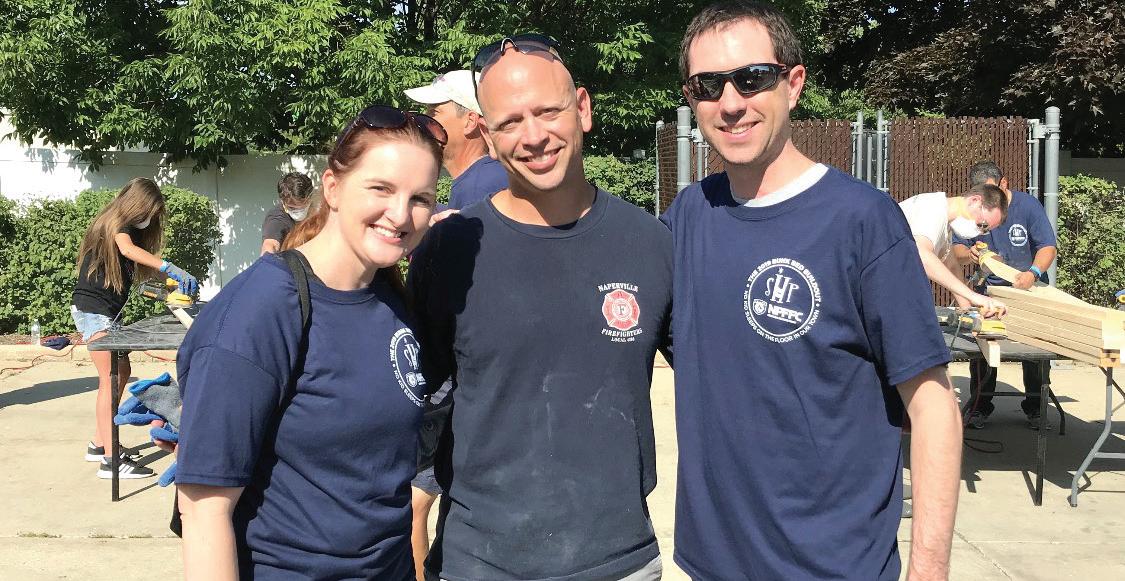
Current Events: Since January 2022, the department has been running a pilot program to understand root causes, possible remediations, and overall prevention of frequent users of EMS services. They defined “frequent” as people calling more than three times a month but found some people calling five or more times a day. The department allocated a special unit that is available Tuesday through Friday from 7am to 5pm. Many of the calls were related to mobility issues, and in one successful case, Jim was able to work with a woman whose prescription for a chair lift had expired. He contacted her primary care doctor and was able to get the chair installed in her home. The department is able to bill insurance for this time, which saves taxpayer money in the long run. Ultimately, the department would like to hire a case manager to do the leg work needed for the individualized care. The goal of the program is to remediate needs before crisis intervention is required.
Ways the Community Can Get Involved:
(1) Sign up for a First Aid, CPR Certification, or the Y-FIRE Program (focused on youth education).
(2) Complete the contact form at www.npffc.org for more information about how to get involved with the Naperville Professional Firefighters for a Cause organization.
(3) Apply to the Citizen Fire Academy by contacting Soraya McLaughlin, Public Education Specialist, 630-305-7055 or mclaughlins@naperville.il.us.




The city of Naperville has a strong and flourishing community—and our restaurants are part of that! What better way to give back than by recommending a favorite breakfast or lunch spot? At Main & Luxe we are firm believers in accountability, and we made sure these local spots were a great opportunity for anyone who’s looking to expand their breakfast and lunch options.


Fontina’s Italian Kitchen
1767 W. Ogden Ave, Ste 131 – Naperville
Our first notable recommendation is a local favorite by the Naperville fire department, Fontina’s Italian Kitchen. Phil Giannattasio, Deputy Chief of the Naperville Fire Department hit the spot when suggesting this lunch place for his favorite dish, the





pepper and egg sandwich. Hot roasted sweet peppers and seasoned eggs is definitely a belly pleaser. Looking for a meatier option? Indulge in the Italian sub, filled with capicola, salami, prosciutto, and provolone. On a lighter note, any one of their crisp salads are a hit. Too hungry to choose? Go for the insalata alla Strega. It has the perfect mix of greens, onion, prosciutto, and blue cheese, served with their homemade Strega dressing. There’s no wrong option on this menu, serving fresh and tasty options.
The Lucky Penny Diner and Deli

1224 W Ogden Ave, Unit G – Naperville Founder of Main & Luxe, Ashley South, has a secret spot for all breakfast lovers. Just a hop and a skip away from her home, The Lucky Penny Diner and Deli has mastered the perfect breakfast sandwich, or what they call “breakfast in a bread.” Two eggs any style, a protein of your choice, topped with the perfect slice of melted cheese. Not full yet? Make sure to ask for an extra side of their homemade hash browns or fruit bowl. Every item on their menu is served to perfection. Ashley’s other favorites are their classic steak n’ eggs with marinated skirt steak (grilled to order) and served with two eggs any style and choice of toast and hash browns and also their breakfast burrito, filled with scrambled eggs, fresh chorizo, onions, and mixed cheeses, grilled and topped with homemade chipotle, crema, and pico de gallo. If breakfast isn’t your style, The Lucky Penny has a full lunch menu of tasty dishes.

224 S Main St – Naperville

Renowned chef and owner, Christopher Mason brings a unique vision with his farm-to-table menu at Allegory, located in the center of Downtown Naperville.


Featuring a modern American menu with a mix of southern flair, his dishes are not only authentic in their names, but in taste. Start with the small plate, We Wanted to Cook Octopus: a beautiful mix of Baby octopus, chorizo, grape tomatoes, fingerling potatoes, olives, pickled sweet pepper on top of sourdough crostinis. Enjoy the freshest ingredients in the Move to the Beat salad, featuring arugula; red, golden, Chioggia beets; shaved fennel; blue cheese; toasted pistachios; and complimented with a blood orange vinaigrette. Still hungry, order the entrée, Gimme a Quiche, my favorite!
Whether it’s breakfast that fuels the belly or a good pick-me up lunch, check out these tasty places. Your hungry palate will thank you later.


Happy eating!

Move to the Beat salad: arugula; red, golden, Chioggia beets; fennel, blue cheese, pistachios, and blood orange vinaigrette. - AllegoryAuthor: JD Hollyfield JD is a USA Today best-selling author with over 60K reviews on Goodreads. Her father was Naperville’s Director of City Planning in the 70s. She lives in Plainfield. She has a BA in Advertising from Western Illinois University and an Event Planning Certification from Harper College Photo courtesy of Allegory Photos above courtesy of Allegory

 By Ashley South and Chris Wichmann
By Ashley South and Chris Wichmann
307 N Ellsworth Street
Reminiscent of a town square, this park was once the gateway to Naperville for those coming by train and the main thoroughfare for employees of Kroehler Manufacturing. Burlington Square was a gift in 1915 from George B. Harris, Chairman of the Board of Directors of the Chicago, Burlington, and Quincy Railroad, along with his wife, Mary. This park is the perfect spot to wait for a friend or loved one to arrive on the train: benches, perennials, trees, and shrubs provide a quiet place outside the bustling downtown. Plants chosen by the Naperville Garden Club for its Blue Star Memorial in the park include calamint, Knockout roses, and Little Lamb hydrangea.

336 Knoch Knolls Road
On March 24, 1980, the Naperville Park District received 13 acres of farmland as a donation from Judge Win Knoch and Irene Knoch to be used for park purposes. Over the years, the Park District purchased the remainder of the Knoch farmland and additional woods and open land around it with the assistance of public grants, which expanded Knoch Knolls Park to approximately 218 acres. In 2021, a beneficiary of the Frank Rus Trust donated nearly 40 acres of land to expand the park. Knoch Knolls is located at “the Forks” of the East Branch and West Branch of the DuPage River and features something for everyone: a nature center with adult and youth programming, children’s playground, biking and hiking trails, picnic areas, 18-hole disc golf course, canoe/kayak launch, and a plethora of wildlife.




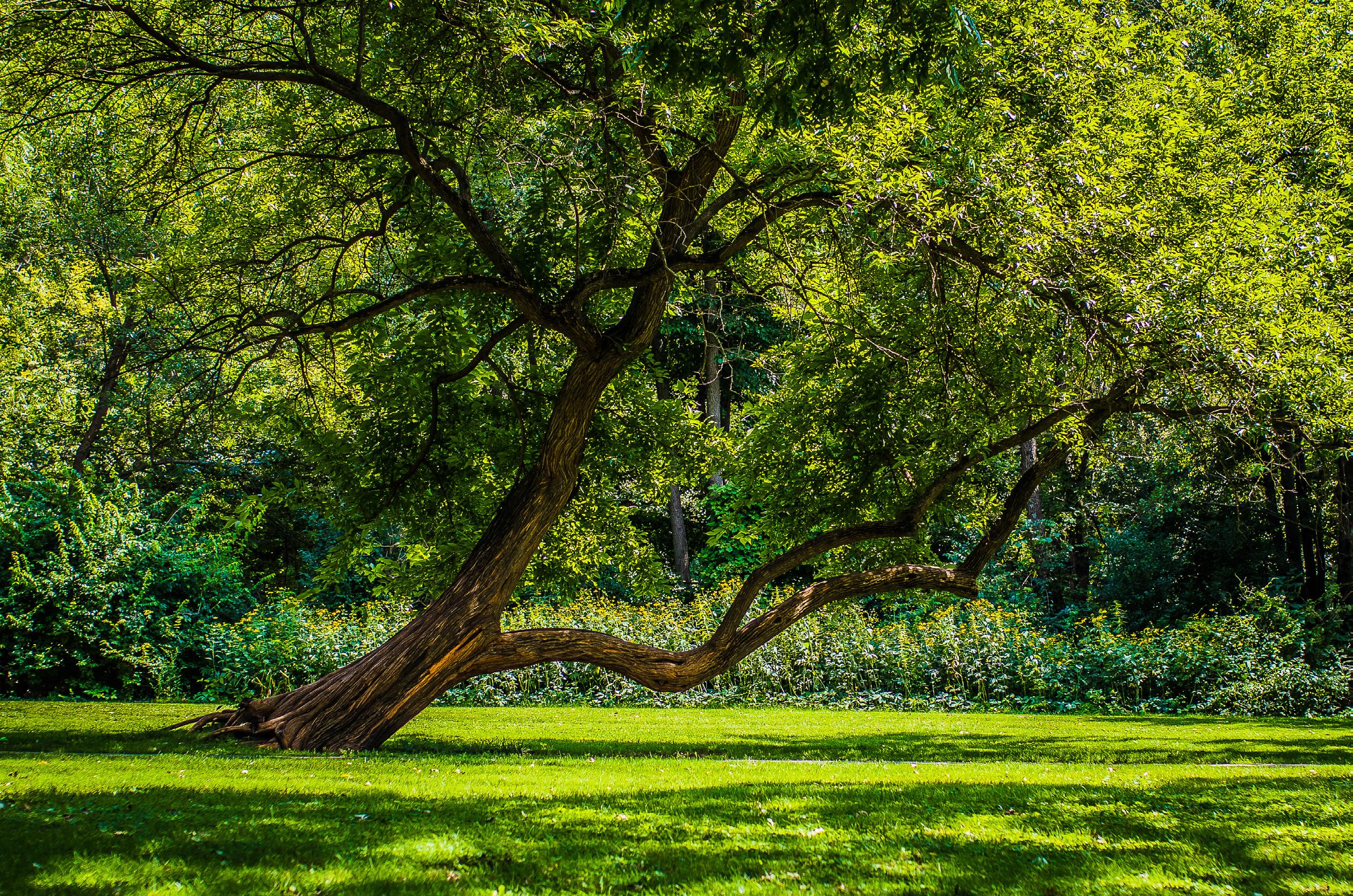
Naperville was named the ‘Best City to Raise a Family in America’ in 2022 by Niche online rankings, and residents would agree there’s plenty to be proud of in their community. Best of all, Naperville residents and business owners possess a sense of community pride and commitment, endeavoring to serve those around them. Each of us are indebted to these individuals for their selfless service, unwavering commitment to excellence, and for the difference they make in our world. How do they do this? Community groups are abundant, with numerous opportunities for businesses and residents alike to enjoy collaboration and public service.
The Naperville Area Chamber of Commerce (NACC) offers business owners a chance to connect, learn, and network with other local businesses.

“We started in 1913 and have a long-standing tradition of bringing resources to the business community,” said Kelli Keyzers, NACC director of marketing and communications. “We connect business leaders—we connect different types of businesses that can collaborate.”
Formed by the businesses of the Naperville area—emerging, small, mid-size, and large global subsidiaries—the Chamber is led by
professionals of all ages that embrace bold thinking as the foundation of the organization.
“Being a NACC member is inspirational,” said John Robbins, owner of Awards & Fine Gifts, Inc. “Meeting professionals from a variety of companies and organizations is a never-ending way to find new business, establish rapport, grow relationships and maintain ongoing business.”
Interested in joining? Find membership information online at www.naperville.net/.
The Rotary Club of Naperville offers four membership options, including a morning, noon, and ‘after dark’ option for locals interested in connecting in this international organization. Rotary members serve by identifying underserved needs and taking action to empower others.
“As president of The Rotary Club of Naperville this past year, it was heartwarming to witness firsthand the incredible work Rotary does not only within our community but around the globe!” said Kim White.

Local leaders say people join Rotary to make personal and professional connections to likeminded people who seek to make the world a better place, both locally and globally. This international organization enhances the local community through club projects, student scholarships, and fundraising for non-profits who provide essential services.
“We also support disadvantaged people around the world through global grants and projects facilitated by Rotary International,” said Rich Tatara, president-elect for the Rotary Club of Naperville. “With 32,000 clubs in 220 countries, ‘Service Above Self’ is the motto of all 1.4 million Rotarians.”
Interested in joining? For information about: Rotary Club of Naperville Sunrise, log onto https://www.napervillesunrise.com/.
Rotary Club of Naperville, log onto https:// napervillerotary.com/.
Rotary Club of Naperville After Dark, log onto https://napervillerotaryafterdark.org/.
Rotary Club of Naperville Downtown, log onto https://rcndowntown.com/.


Another outstanding Naperville community organization is the Jaycees, which is the Junior Chamber. It was chartered here in the mid-1950s with a commitment to building Naperville’s future leaders. The group is dedicated to helping the community by volunteering time, fundraising, helping others, and recognizing outstanding effort of others within the community. Two of the Jaycee’s most popular events in Naperville are the Last Fling and Breakfast with Santa.
Interested in joining? Find valuable Jaycee membership information online at www.naperjaycees.org/.
The Naperville Garden Club may be perfect for you. The group works to stimulate the knowledge and love of gardening among amateurs while encouraging civic interest and providing scholarships to those students pursuing degrees that reflect the interests of the Club. Garden enthusiasts also gather to enhance the Naperville environment by donating trees, plants, and services to beautify public buildings and other public places.
Interested in finding out more about the Naperville Garden Club? Log onto https://www.napervillegardenclub.org/

Former First Lady Michelle Obama once said, “There is no limit to what we, as women, can accomplish,” and the women of Naperville wholeheartedly prove her point through the Naperville Woman’s Club, dedicated to promoting community improvement by enhancing the lives of others through volunteer service.
The organization was founded as a literary club in 1897 by 19 women whose goal was to help members assume a role outside of their homes and churches—a bold undertaking in the 19th century. Today, the NWC focuses its philanthropic activities on art, education, and community service. The annual Fine Art & Artisan Fair is the longest continuously operating art fair in Illinois. Club members also participate in local service projects that benefit the community.
For NWC membership information, log onto https://www.napervillewomansclub.org/


Lions Clubs International (LCI) is the largest and most active service organization in the world, with over 1.4 million members in 182 countries. Lions Club members assist people who cannot afford the vision and hearing care they need. Naperville Noon Lions also provide diabetic test strips for schools in Districts 203 and 204, contribute to local organizations, and provide services to Napervillians in need. The Naperville Noon Lion’s Turkey Trot, held since 1998, is one of its most wellknown events. Interested in more Lion’s Club membership information? Log onto https:// napervillenoonlions.org/.
Author: Dawn KlavonDawn Klavon works as a freelance writer, traveling the globe with her husband and writing from any coffee shop, hotel lobby, or boulangerie where she feels inspired. Having earned a bachelor’s degree in journalism from Boston University and a master’s degree in journalism from Harvard University, she is uniquely qualified to craft feature stories on compelling people, trendy foods, and fascinating lifestyles. Dawn authored a book during her first year in grad school, along with her professor and classmates, called “Journalism Today -- Profiles in Passion and Diversity.”
Even though Springfield is often overshadowed by the bright lights and towering skyscrapers of Chicago, it still has something for nearly every interest. History buffs, architecture aficionados, museum fans, and outdoor lovers can all find their place here, making it a great destination. After all, Illinois is the Land of Lincoln, and being the state capital, Springfield is a mecca for all things civic and historic.
Tour the Illinois State Capitol

Located in the heart of downtown Springfield, the Illinois State Capitol is a must-see. The first legislative session was held here in 1877. This magnificent building, built to rival palaces of Europe, replaced the Old State Capitol Building, which is at 6th Street and Adams Street. Its most distinguishing feature, a 405-foot dome atop the building, is a convergence of Renaissance Revival and Second Empire styles. The dome lights up the interior when the sun shines through stained glass lining the inside of it. Statues of prominent historical Illinois figures dot the floor. As an added feature, you can see Illinois politics in action from balconylevel seating when the legislature is in session.
Browse the halls of Abraham Lincoln Presidential Library and Museum
This museum traces the life of the 16th U.S. president, Abraham Lincoln, and the history of the Civil War. It has an extensive collection on Lincoln – his life and his presidency. It also houses the collection of the Illinois State Historical Library, founded by the state in 1889. Something sure to thrill young history fans is the Abe Lincoln impersonator who occasionally pops out and roams around. He is happy to greet you and discuss anything from his life, including his wrestling career. There is no better place to learn about the life of Abe Lincoln than at this museum.
on an
Designed in 1904 by Frank Lloyd Wright, the Dana-Thomas House is a large, 35-room home designed for entertaining large groups of people. It was built in the Prairie style and reflects the mutual affection of the patron and architect for organic architecture. It houses original Wright-designed furniture that has been beautifully restored, along with many Wright-designed art glass pieces in windows, interior doors, bookcases, and light fixtures. Two natural shapes can be seen in the art glass throughout the home: the butterfly and the sumac plant. The interior architectural design was extraordinary and avant-garde for its time
The Abraham Lincoln Memorial Garden is a 100-acre woodland and prairie garden designed by legendary landscape architect Jens Jensen who pioneered the natural, prairie landscape and was a frequent collaborator of Frank Lloyd Wright. This was one of the last commissions of his career. It was envisioned as a unique, living memorial to Lincoln featuring plants native to Kentucky, Indiana, and Illinois — the three states Lincoln had lived in. Planting began in the garden on November 14, 1936, when Boy Scouts and Girl Scouts planted acorns that are the garden’s towering oaks today.
of construction. The tour is free, but donations are welcome.
The Lincoln Home National Historic Site preserves the Springfield home and neighborhood where Abraham Lincoln lived from 1844 to 1861 before becoming the 16th President of the United States. When you take the tour, the feeling of walking where Lincoln once lived is truly incredible. Walking on the brick road outside Lincoln’s home adds to the feeling of going back 200 years in time. Kids can also participate in the Junior Ranger program by filling out information in the program book. Afterward, they receive a certificate signed by the ranger and a junior ranger badge.
Oak Ridge Cemetery is the second most visited cemetery in the nation, second only to Arlington National Cemetery. The Lincoln Tomb is the final resting place of Abraham Lincoln, his wife Mary Todd Lincoln, and three of their four sons: Edward, William, and Thomas. A bronze recasting of Gutzon Borglum’s head of Lincoln stands on a pedestal in front of the entranceway — the original casting is in the U.S. Capitol. It is traditional to rub the nose of Mr. Lincoln for good luck.
The Illinois State Museum features the life, land, people, and art of the State of Illinois. It is a small museum with two floors of exhibits, ranging from geological, botanical,
Fairytale corner room, Hotel AX
and zoological specimens to life from the first settlers and Native Americans up to the present. It takes about 90 minutes to tour, with many interactive elements for kids. There is an art gallery upstairs and a learning and recreational area below where kids can play.
Dine at the oldest restaurants in Springfield
In keeping with the theme of exploring the history of our state’s capital, Maldaner’s restaurant is a must-stop. Established in 1884, the restaurant serves contemporary American fine dining in a historic setting. The inside is lovingly restored, keeping with the theme and ambiance of the other historic stops around the city. However, this isn’t a place stuck in the past! Chef/owner Michael Higgins tends an eco-friendly rooftop garden with solar panels providing energy for the restaurant, vegetables and herbs for the menu, native perennials for the struggling monarchs, and hives for bees to live (and fresh honey for the restaurant). Local and regional ingredients are hallmarks of the menu. Some customer favorites are heirloom tomato salad, mushroom risotto, beef Wellington, and Queen of Sheba cake for dessert.
And if you are still craving some sweet treats, check out Mel-O-Cream Donut. They have been Springfield’s favorite donuts since 1932. You can enjoy a classic recipe donut or explore a fun variety of donuts like Bavarian powdered bismark, cream honeymooners, cream cake, and more.

The Inn at 835 is a boutique hotel with 13 guest rooms and 6 extended stay suites. The Inn is on the National Register of Historic Places and was originally built as a luxury apartment building in 1909. Centrally
located within walking distance of all the historic sights downtown, it offers both a unique and convenient stay for visitors. The rooms maintain their turn-of-the-century character but include contemporary comforts such as internet and flat-screen TVs. Most include a spacious balcony overlooking the surrounding area.
Another historic hotel to check out is the Pasfield House, which overlooks the Illinois State Capitol. Built in 1896, the house is typical of the Classical Revival style architecture that increased in popularity after its introduction in the 1893 World’s Columbian Exposition in Chicago. It was intentionally designed as a contrast to the Queen Anne homes popular in this neighborhood at the time. In the 1990s, it was extensively rehabilitated and received designation as a Springfield city landmark. Its current owner has converted it into a boutique hotel with two rooms available and more on the way.
Springfield delivers both enlightening history lessons and small-town, big-city vibes. With plenty of things to see and do, it is a great place to visit for a weekend getaway or longer, any time of the year.




The COVID-19 virus was the greatest public health crisis of our time. Years later we continue to experience the ripple effects of the pandemic, especially the social-emotional aspects. Communities and families were fractured. Due to social distancing and lockdowns, many of us spent time isolated and away from loved ones. The pandemic increased levels of anxiety, depression, and overall stress.
Harvard Graduate School of Education conducted an in-depth study on loneliness in 2020 and reported that 36% of all Americans, 61% of young adults, and 51% of mothers with young children are experiencing serious loneliness. A unique survey question really solidified the state of loneliness in our country, 50% of survey respondents reported that no one in the past few weeks had taken time to check in on them, even for a few minutes. Another troublesome aspect of this study showed that the lonely people are more self-critical and expect rejection from others.
Research has linked isolation to physical issues such as heart disease, excess weight, high blood pressure, and weakening of our immune system. From a mental health aspect, loneliness is linked to poor sleep quality, cognitive decline, Alzheimer’s disease, and risk of premature death. One theory suggests that loneliness activates the fight or flight mechanism, and a lack of socialization is a threat to our homeostasis. This chronic activation of the fear response subsequently reduces sleep and negatively affects hormones such as cortisol. Cortisol, the stress hormone, when activated will impair focus, decrease the immune system, and increase inflammation. Per surgeon general, Dr. Vivek Murthy, “Loneliness and weak social connections are associated with a reduction of lifespan similar to that caused by smoking 15 cigarettes per day.” This equates to a shortening of a person’s life by 15 years.
As we rebuild society, joining a community has numerous benefits that can improve both our unique well-bringing and overall happiness. One of the biggest benefits of community is the sense of connection and belonging it provides. Finding a group of like-minded individuals
provides fulfillment and enrichment. Along with belonging, being part of a community provides purpose and meaning. Working toward a common goal or sharing a common interest provides motivation on a greater level. Many times, when we feel disconnected or directionless, joining a community can provide support and renewed purpose in our lives. A community provides us the opportunity for mentorship, resources, and opportunities we may not otherwise have access to.
Naperville has always had a strong sense of community since its foundation. As the city has expanded, it has strongly held on to its community identity.
Find your community:
1. Volunteer for a cause that you are passionate about. Volunteering has various benefits, including giving back to the community, but it also connects you with individuals who share your passion and interests.

2. Attend an event or gathering. Naperville has no shortage of art shows, festivals, park district opportunities.
3. Join a club or group. There is a multitude of sports clubs, book clubs, pickle ball clubs, etc.
4. Take a class! Try something out of your comfort zone, whether it’s an art class, learning a new language, or fitness program.
5. Reach out to friends or neighbors. A low-risk way to expand your social circle, strengthen friendships, and meet new people.
With the current hustle culture, making connections can feel like an indulgence and fall to the wayside. One of the most beautiful aspects of humanity is our uniqueness and how much we can offer our community. Trying something new can feel vulnerable at first, but the benefits to your health both emotional and physical round out truly holistic health.
 Author: Neha Shah, MD
Author: Neha Shah, MD
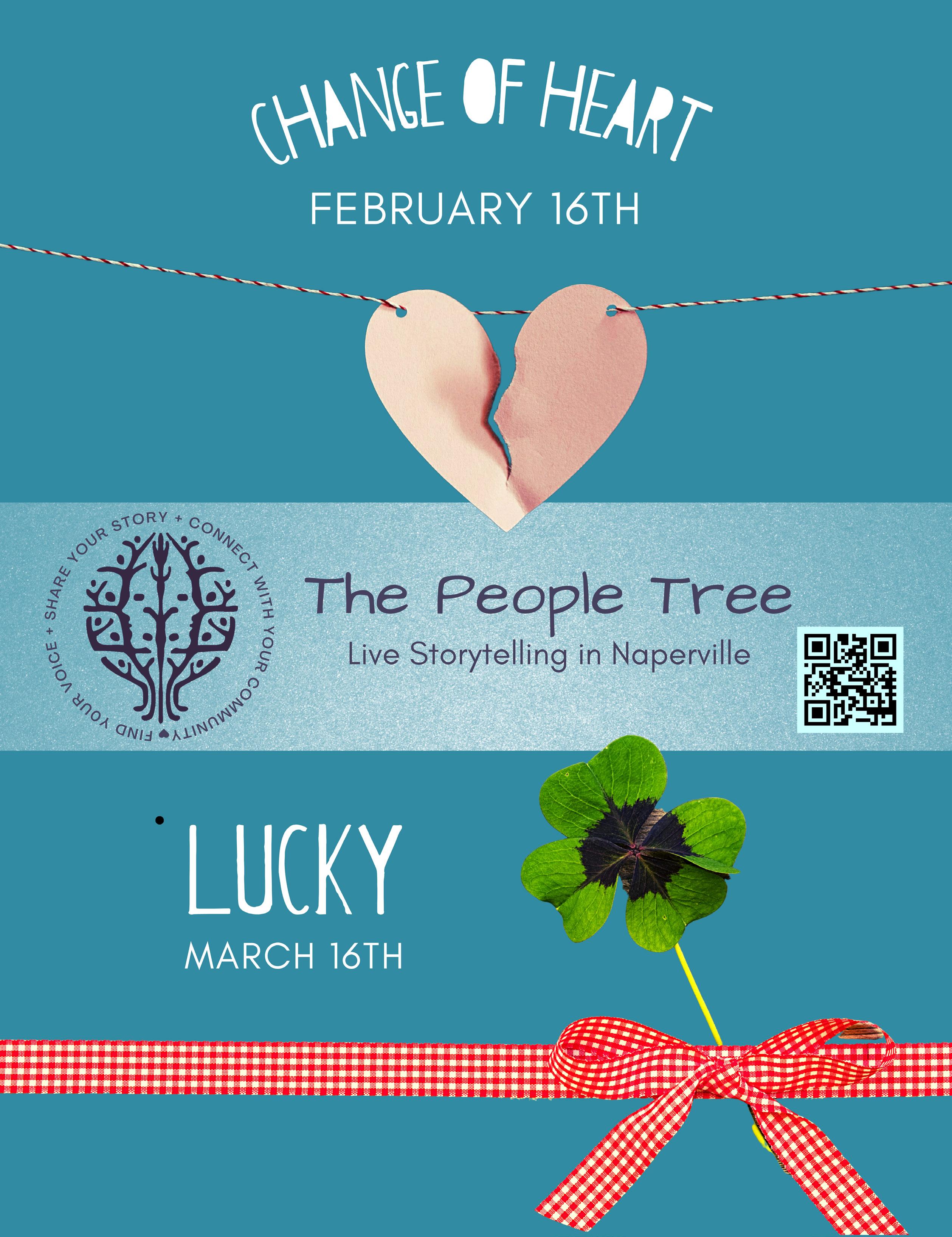
 By Chris Wichmann,
By Chris Wichmann,
Naperville is the fourth largest city in Illinois with about 27,000 students in District 204 and about 16,000 students in District 203. A lot of kids and a lot of need! The Indian Prairie Educational Foundation (District 204) and the Naperville Education Foundation (District 203) both seek to make a difference in the lives of students by funding various programs that fall outside the school districts’ budgets. At the individual school level, most schools have a parent-teacher association (PTA), referred to as the Home & School Association in District 203, which focuses on community building and raising funds for special projects. As you’ll read below, these groups enrich the experiences of students while bringing in vital funding.
The Indian Prairie Educational Foundation was established in 1988 to support the fine arts programs, help build a top-tier music program, and honor the top performing students and teachers. Since then, its mission has evolved to include district funding for STEM classes, an annual science fair, and robotics clubs. The Foundation also provides significant support for students’ health and well-being. These programs include “Young Hearts for Life,” which
provides free cardiac screenings to all high school students; “Back on Track” counseling in partnership with 360 Youth Services for economically disadvantaged middle and high school students who are experiencing significant stress and struggling socially or academically; and the Kid Essentials Fund, which assists with immediate needs and basic necessities for the district’s homeless and low-income students.
Trudie Ranson, PhD, (pictured below left, center) has been the executive director of the Indian Prairie Educational Foundation (IPEF) since July 2022. She shared, “I have the best job in the world: helping students and teachers.” Prior to this role, she was a member of the foundation’s executive board. Trudie is the mother of a current high school student and a 2022 graduate of District 204. “There are a lot of volunteers behind the scenes associated with the foundation helping the students to excel and remove barriers to education,” Trudie said. “Our three biggest events are the Fine Arts Festival, our Team IPEF charity runners who participate in the Naperville Half Marathon and 5K race, and the annual Inspire Fine Arts Gala. But volunteers are also involved at events like the biennial cardiac screenings, robotics tournaments, and especially the Fine Arts Festival, the biggest event in the district.”
Held each May on all three high school campuses simultaneously, the Fine Arts Festival is a free event for the community featuring 12,000 pieces of pre-K to 12th grade artwork representing students from all 33 district schools. There are over 80 musical performances with 9,000 mixed-age student musicians. The Inspire Fine Arts Gala is put on annually to raise funds for the Fine Arts Festival. This year’s Gala is March 10th at Loft 28 West in Aurora and will feature a silent auction, sips and bites, high school musicians, and a student art gallery.

Established in 1992, the Naperville Education Foundation (NEF) seeks to ensure that every student in the district has the opportunity to thrive. The foundation provides educational enrichment programming through before- and afterschool programming and administers 25 different scholarships and grants ranging from $500 to $7,000 for graduating seniors. Awards are given in the categories of diversity and inclusion, fine arts, physical education, social emotional learning, STEM, and literacy. In addition, NEF funds express grants up to $1,000 to provide a quick and easy way for the foundation to make staff members’ and students’ great ideas a reality in the current school year.
Kelly Llewellyn (pictured above, far left), an NEF board member, district 203 parent, and district 203 alum shared, “NEF has so many puzzle pieces, and it does such a good job finding the piece that will make a difference for a single student or a whole school. For individual students, NEF supports those in need when the school social worker may identify a service or need that is not part of the normal services of the school district.” A special program NEF supports includes Kid Booster Anonymous, which provides timely support to an at-risk student such as a dental visit or a psychiatric visit. RISE is a newer program that provides for students with significant mental health or behavioral health needs. Its two main components are providing onsite mental health services and supporting a community, wraparound process that provides individualized services to families in need within the district.
On March 22nd, NEF will host its 30th annual Building a Passion Breakfast, one of the foundation’s largest fundraisers. During the event, NEF celebrates its business partners, donors, schools, and grant recipients. Kelly said, “One year, a grant recipient sang for us; his singing brought tears to our eyes. This Naperville North student had wanted to be in the show choir but couldn’t afford the $1,000 fee. NEF helped pay the fee, and he shared its beautiful impact for everyone in the audience.”
Dining out days, ice cream socials, color runs, winter bake sales, spring flower sales, and spiritwear sales are examples of activities and fundraisers organized by the schools’ parent groups. Catey Genc, President of the Indian Prairie Parents Council, said, “Color runs are huge— they build a great sense of community because the whole family can participate, and they can raise a lot of money! Depending on the school, $10,000 to $25,000 can be raised from a color run.” Catey said the PTAs are working even harder to bring a sense of community back to the schools post-COVID.
The funds raised are used to enrich the experiences of students and teachers at their schools. Gracia Livie, President of Kingsley Elementary’s Home & School Association, shared examples:




“Each year, Kingsley’s Home & School provides new kindergartener t-shirts for all entering kindergarteners and t-shirts for the fifth graders at their annual Outdoor Education field trip. Funding also goes toward school assemblies, classroom parties, staff appreciation lunches, and grants up to $100 for teachers to supplement their classrooms. These activities bring a lot of parental involvement. Each year, over 100 parents volunteer in one way or another.”
For more information on supporting Naperville schools and students see the following:
Indian Prairie Educational Foundation: https://ipef204.org/
Naperville Education Foundation: https://nef203.org/

Indian Prairie Parents’ Council: https://www.ipsd.org/IPPC.aspx
District 203 Home & School Associations: https://www.naperville203.org/Page/6686
Author: Chris WichmannOur senior editor. Chris is a writer, editor, and project director during the day, and our seamstress by night. She carefully unstitches misplaced words or paragraphs and brings them back together in ways much better than we could have hoped. She lives near Knoch Knolls Park.

In 2022, Library Journal ranked the Naperville Public Library best in the U.S. in the $10-$29.9 million expenditure range category. One of the reasons Naperville’s libraries are among the best in the nation (across all categories) is thanks to the equitable, inclusive approach to building and curating a robust and diverse collection of resources that evolves alongside the needs of the community.
Along with physical, digital, and event-based resources for entrepreneurs and investors, job seekers, parents and caregivers, and teachers and homeschoolers, the Naperville Public Library also offers resources for traditionally underserved groups of people, including English language learners, individuals with visual impairment and reading disabilities, and adults with dementia.
Karen Toonen, the library’s collection services manager, says it’s a library’s job to connect people within communities with services and resources, especially since libraries are funded by taxpayer money. “By making sure that our customers can find themselves within our collection and offerings, we are reaffirming that they are welcomed members of our community,” she says. “The library wants people to see themselves reflected in the materials they use, see into other world views, and even step into stories far outside their personal experiences. We are the sum of our parts, and together our diverse community makes Naperville a better place.”
For Napervillians who speak a language other than English at home, the library offers 10 official World Language collections in Arabic, Chinese, French, Hindi, Marathi, Polish, Russian, Spanish, Tamil, and Urdu. For each language, the library has collections


in the adult and children’s departments that span print, eBook, and audiobook holdings.
The library also has a variety of materials for English language learners, including books, videos, audiobooks, and kits that can be checked out at all three of the library’s buildings. A host of multilingual online resources include databases called Mango Languages, a language- learning resource with reading, listening, and exercises for 70+ languages and LOTE4Kids, an electronic resource with thousands of audio-picture books in 50+ languages, together with English translations. For those who want in-person practice conversing in English, English Conversation Groups facilitated by Literacy DuPage take place weekly at all three locations.
English Conversation Groups at the Library
95th Street: Mondays, 7:00–8:30 PM, Lookout Room (2nd floor)
Naper Blvd: Wednesdays, 10:00–11:30 AM, Conference Room (basement)
Nichols: Thursdays, 6:30–8:00 PM, NaperLaunch (upper level)
Visit the library’s Language Resources web page for a complete list of available resources: www.naperville-lib.org/251/LanguageResources.
Resources for Individuals with Visual Impairment and Reading Disabilities
In 2021, the Naperville Public Library
received a patron request to expand its Braille collection, and it did, thanks to its own efforts and donations from the DuPage Children’s Museum. The Braille collection now contains about 140 books, plus some board games designed for Braille readers. The library’s Talking Book collection is another great resource for individuals who are visually impaired or who have other disabilities that prevent them from reading print books. Talking Books include a print book with a read-to-play audio device bound to the cover. The collection includes more than 3,000 titles, including picture books, beginning readers, and children’s chapter books, as well as books in Arabic, Chinese, French, Russian, and Spanish. The ability to read along with Talking Books benefits many of the library’s patrons, including early readers and individuals challenged by dyslexia.

The library’s collection includes many books pertaining to dementia, including memoirs, informational books for caregivers, books about how to communicate with someone with dementia, and books for teens and children who have a loved one affected by dementia. The Naperville Public Library also partners with Dementia Friendly Naperville to provide a space for people with dementia to interact with each other and enjoy seasonal activities and crafts. These events, called Memory Café, also give caregivers a chance to meet with other people in the community who face similar challenges.
The Memory Café meets every second Tuesday of the month at the 95th Street location.

Upcoming Dates:
February 14, 2023, 2:00–3:30 PM
March 14, 2023, 2:00–3:30 PM
The Naperville Public Library’s impressive collection already serves so many Naperville residents, but the library’s staff view the library’s collections and resources as works in progress. Toonen says: “As the demographics of Naperville continue to change, the library will continue to adapt and change with the community.”
To learn more about the library’s resources, visit www.naperville-lib.org.



 Author: Bethanie Hestermann
Author: Bethanie Hestermann

Naperville Public Library is committed to providing materials, services, and programs that represent a wide array of cultures and experiences so that all members of the community feel included and represented.
– Naperville Public Library’s DEI (Diversity, Equity & Inclusion) Statement
Talk about tender. Hints of fresh garlic, red wine and fresh herbs. Literally melts in your mouth. Great combination with the creamy grits. Pan reduction for the sauce is a definite win. Join me when I make this - LIVE! Event details at mainluxe.com/events
Magazine.
darkhorsegrillandcatering.com


M&L Readers:
• Distribution of 11,500:
-11,000 Direct delivery to residences

-500 Local partnerships and pickup points
Sold in Oswald’s and Barnes & Noble
• Select delivery - Downtown, East Highlands, White Eagle, Tall Grass, Brookwood Trace neighborhoods
• 20% Naperville household coverage; ~30,000 readers/issue
• Target: Women 35 to 65

In researching local history, many people find themselves asking, “Why and how did Naperville become the dynamic suburb it is today?” From the farming community of the mid-1800s to the bustling technoburb of today, Naperville’s growth and success reflect the decisions of hundreds of policy makers, planners, leaders, and residents over the course of its history.
Naperville’s history reflects a place of transformation, vision, and a fair amount of audacity. However, it is not without problematic events. As in most of the region’s Euro-American settlement in the early 1800s, Naperville’s beginnings were made possible only through the removal of Illinois’ remaining Indigenous residents, specifically the Potawatomi.
When Naper’s Settlement was founded in 1831, it was part of Cook County. When DuPage County split off in 1839, Naperville was the oldest settlement and became the county seat. During this period, governing revolved around land claims with protection boards settling claim disputes. Some of the earliest town leaders established themselves as members of these boards.
Naperville incorporated as a village in 1857. During the May 1857 election for village officers, 174 votes were cast. The president and four trustees were elected for one-year terms, while the clerk, police magistrate, and police constable served four-term years. Each position on the ballot had one citizen’s name next to it, and all were completely unopposed. Joseph Naper was elected the first village president, serving from May 1857-April 1858.
In March 1890, Naperville voters favored incorporation as a city by a 338 to 61 vote. The new government included a mayor and six aldermen (two from each ward). The city clerk, treasurer, attorney, and police magistrate were also elected positions. Over the next three decades, city residents started receiving
city services including water, sewers, electricity, and telephones. Naperville changed its government several more times. In 1912, it adapted a commission government with a mayor and four commissioners-at-large.
Between 1950 and 1980, Naperville completed 240 land annexations, primarily of farmland, sparking intense debates about what Naperville would grow to be. In 1954, the City Council approved a suburbanization ordinance that started a housing boom. This ordinance set minimum standards for home and neighborhood construction to ensure that Naperville buildings would always be “of the highest quality.” Excellent schools, along with the construction of the EastWest tollway (made possible through the Federal-Aid Highway Act of 1956), made Naperville a desirable place for suburban living.
City-manager government was adopted in 1969. A mayor and four councilors selected a city manager to oversee day-to-day operations. This system was challenged by an unsuccessful referendum in 1976. The 1970s defined the path forward for the community as a professionally managed municipality that activated the community’s voice through various committees and commissions.
Prior to 1971, Naperville had no boundary agreements with adjacent municipalities, and by 1972, a Boundary Study Commission was formed in cooperation with Warrenville, Bolingbrook, and Aurora. Also, that year, CAN/DO, an organization to promote the revitalization of the downtown, was created to develop a comprehensive plan that included businesses, property owners, organizations, and policy makers. The result was an overarching plan that included retail, parking, streetscapes and sidewalks, public buildings, landscapes, and the Riverwalk concept. The Riverwalk came to fruition in 1981 as a major project to mark the 150th
anniversary of Naperville’s founding. Strategic changes in governance the last decade included reflecting on what it means to be an open and welcoming community with diverse leadership. The first woman was elected Mayor in 1983 and only recently have we elected policy makers of color. While the demographics of Naperville dramatically shifted since it was an all-white community prior to the 1970s, residents spoke publicly about their experiences of racial, ethnic, religious, and anti-LGBT discrimination. The City responded by planning for a more inclusive and diverse future.
In December 2019, it adopted a new mission statement valuing inclusivity and diversity: “To provide services that ensure a high quality of life, sound fiscal management, and a dynamic business environment, while creating an inclusive community that values diversity.”
The Housing Advisory Commission is now a Human Rights and Fair Housing Commission. In 2021, the City’s first Diversity, Equity, and Inclusion Manager was hired. In much the same way as the 1960’s civil rights era, the religious, cultural, and corporate communities are innovating and participating in efforts to bring people together toward greater understanding.
As early as 1857, Wheaton began to advocate for itself as a better location for DuPage County’s seat based on being more centrally located and having a railroad stop. Eventually on June 8, 1867, Wheaton called for an election to remove the county seat from Naperville to Wheaton, which carried by a narrow margin of 1,686 to 1,635 votes. However, Naperville refused to recognize the result of the election and residents and officials would not relinquish county records until a suit had been settled in the courts of Cook County on the validity of the county seat switch.
Part of a 1960s planning document for the City of Naperville





In a preliminary ruling, the courts had advised Naperville to move the records to Wheaton, but Naperville ignored the court’s advice. In the fall of 1868, forty citizens of Wheaton quietly drove down to Naperville in the middle of the night, backed a wagon to the windows of the Court House, loaded the books into the wagon, and traveled back to Wheaton. This was perceived as stealing the records by the southern residents of DuPage County and a justified transfer of County property by the northern residents.

According to local lore, “Friendship ties were severed…and things were said and done which are better forgotten…” The legal arguments over the county seat would continue for several more years and there remained a rivalry well into the 20th century between the two communities.

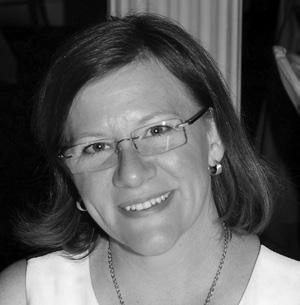
Towns, Villages, Cities…What’s the difference?
Naperville was founded in 1831 but incorporated as a village in 1857. The founding of a community should not be confused with the incorporation date- they are almost always two different dates. There were three options in which a community could incorporate- as a town, village, or city (after 1870, towns were no longer allowed). How a community incorporated had little to do with size as one might assume but rather municipal governance structure. Villages and towns are governed by a board of trustees and cities have mayors and councils with an aldermanic, commission, or managerial form. Some villages and towns, like Naperville, changed structure as they grew. Benchmarks in Naperville’s Growth
1818 - Illinois becomes the 18th State of the United States of America.
1831 - Joseph and John Naper, among dozens of others, form Naper Settlement in which a grist mill, school, trading post, and living structures are built along the banks of the DuPage River near where Centennial Beach is today. Stagecoach service and postal delivery starts by 1834.
1839 - DuPage County splits from Cook County and Naperville is named the county seat. It will retain that designation until 1867. 1842 - Naperville’s 19 sections were platted (surveyed and registered with the State) by Joseph Naper. In the 1800s, it added twenty-one additions forming today’s downtown area.
1848 - The Galena and Chicago Union Railroad opens with railroad stops through the central section of DuPage County. When Naperville is approached about establishing a station along the line, town officials who already invested in the plank road strenuously oppose the railroad opportunity in favor of building a plank road. The Plank Road is built in 1850 and tolls are collected until 1854 when it is disbanded.
1850 Population: 1628
1857 - Naper Settlement is incorporated as the Village of Naperville, and a common council is adopted. The first election after incorporation included 174 votes cast. The first elected President of the Village was Joseph Naper; four councilmen and one clerk were also elected. The first election to remove the county seat to Wheaton was held with the results in Naperville’s favor.
1860 Population: 2599
1864 - The Chicago, Burlington, and Quincy Railroad was completed through Naperville providing a boost for development.
1867 - The Illinois legislature votes to remove the county seat to Wheaton. Naperville refuses to acknowledge the results or to move the county records. A year later, Wheaton residents take the records in a midnight raid.
1870 Population: 1713
1874 - A volunteer company forms the Naperville Fire Department with the purchase of one hand engine, one hose cart, 700 feet of hose, and other equipment. Within a year, the Village Council purchases a hook and ladder truck. In 1888, the first Fire Station is constructed on Jefferson Avenue.
1880 Population: 2073
1890 Population: 2216
1890 - The village is reorganized as a city and elects J.J. Hunt as mayor, “inaugurating a new era of prosperity in the history of Naperville,” according to The Clarion newspaper. City Hall is completed the year before. Electricity comes to Naperville. Within 10 years, the City will purchase an electric plant from a private owner.
1900 Population: 2629
1900 - The first automobile appears in Naperville and parking problems began for the City. . From1948 to 1976, parking meters were used as a way to deal with parking shortages.
1903 - Naperville builds a water works system and water begins flowing through pipes into homes and businesses in 1904 along with the establishment of the Board of Local Improvements and the City’s sewers.
1905 - Natural gas service was established in Naperville.
1910 Population: 3449
1912 - Commission form of government is adopted and will begin the following year. Francis A. Kendall is elected Mayor. Within two years, the downtown roads were paved.
1917 - The City converts the First National Bank and Masonic Building into the City Hall.
1920 Population: 3830
1923 - The City begins to contract for electricity with Public Services Co. of Northern Illinois. A City ordinance is passed to establish garbage disposal.
1924 - As zoning laws are starting to be established around the nation, Naperville adopts the first zoning ordinance defining areas of growth and restrictions for the community. In several subdivisions and new homes in the first half of the 20th century, deeds included restrictive covenants with “Caucasian only” language. Also in 1924, the first traffic light is built at Jefferson and Washington to handle the increasing auto traffic. The first full-time firefighter is hired.
1925 - The northern City boundaries stretches to Ogden Avenue and City streets are renamed as “streets” for north-south routes and “avenues” for east-west routes.
1929 - The Police and Fire Departments are located next to each other on Jefferson Ave.
1930 Population: 5118
1931 - Naperville celebrates its 100th year with an extended festival with pageants, presentations, and parades. The community marks the anniversary with the opening of Centennial Beach and Park in 1937-all built during the Great Depression.
1934 - The Civilian Conservation Corps workers camp at McDowell Woods enrolled more than 250 men to work on public works projects.
1936 - Caroline Martin Mitchell bequeaths 212 acres adjacent to downtown Naperville to the City. One of her stipulations was that her home and surrounding land would remain a museum in perpetuity. The rest of the land was to be used for the community good and includes Knoch Park, parts of Edward Hospital, Naperville Central High School, Rotary Hill, Community Garden Plots, sections of Naperville Cemetery, and Sportsman’s Park.
1940 Population: 5272
1940 - City builds new Post Office on Washington Street.
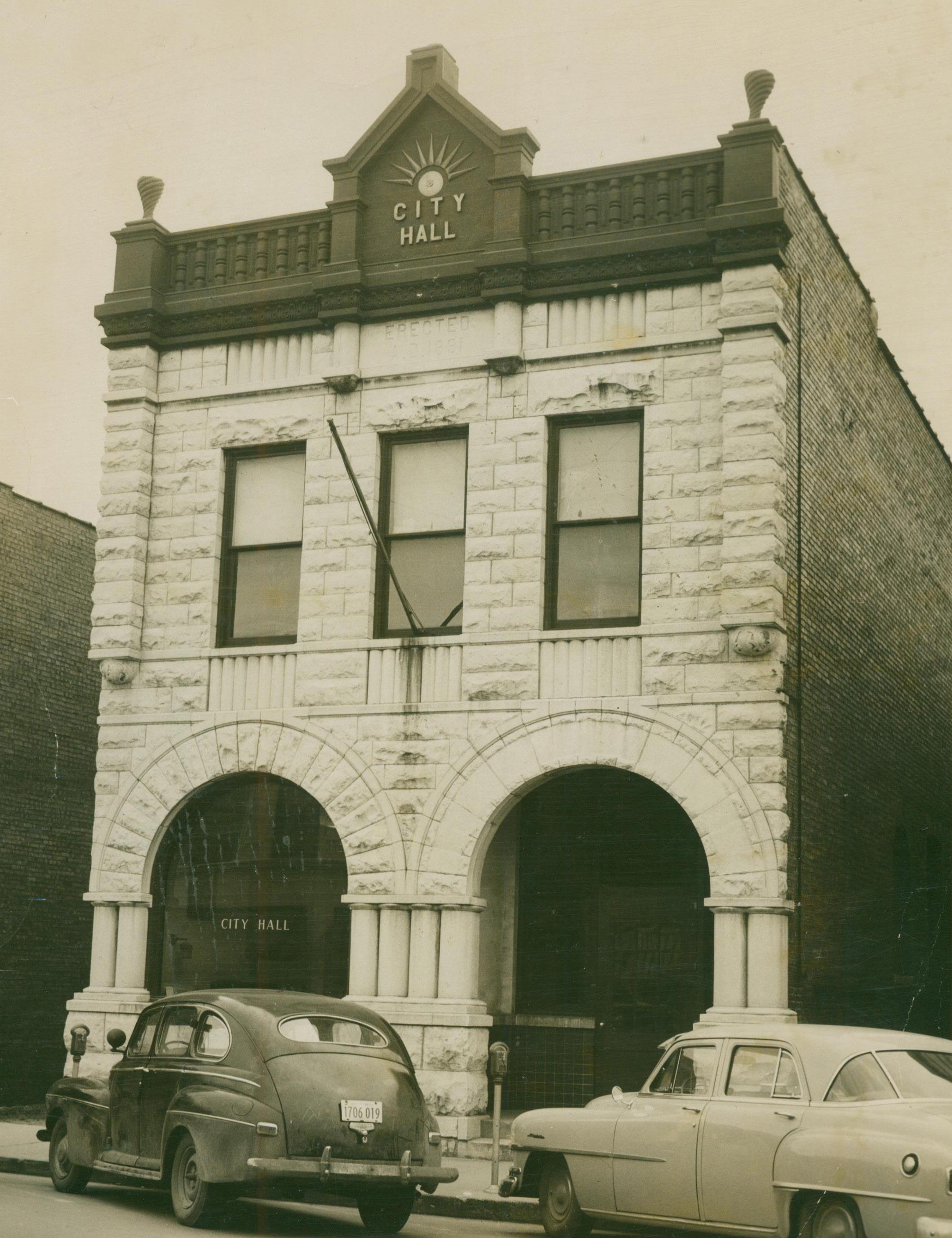
1946 - Post-war growing pains include lack of housing for returning GIs. Naperville City Council establishes Planning Commission.
1950 Population: 7013
1950 - Harold Moser begins several housing developments including Burlington Park and Moser Highlands. By 1956, new homes bring the need for lawn sprinkling, and the City passes restrictions on watering for the first time.
1951 - Parking continues to be a significant problem for City administrators. City produces a future plan for growth.
1955 - A US government Nike guided missile anti-aircraft installation is built near Mill and Diehl and will be active until 1963. This land is now known as Nike Park.
1958 - The East-West Tollway is completed opening up Naperville to significant suburban sprawl. The arrival of the East-West Tollway (now I-88) connecting Naperville to Chicago and the larger region in ways that it previously had not been. As a result, the city boomed in both residential development and business growth. The tech corridor brought national companies like Bell Labs to Naperville. Many of these companies came with commitments to fair hiring practices and required housing that served their work force.
1960 Population: 12,933
1960 - The City annexes nearly 1600 acres and effectively doubles its size from 1724 to 3464 acres. City Council hires an outside planning consultant firm to manage growth. City telephone service is upgraded to direct dial. Future subdivisions are planned as Naperville grows.
1965 - Naperville Human Relations Council is formed from the Human Relations Study Group (which began in 1964) to bring community conversations around discrimination and Fair Housing to the forefront. The next year, an African American couple that was transferred to Bell Labs filed a complaint to the federal government on being unable to obtain housing in the community where they worked.
1967 - The Park District is formed. The City Plan Commission starts planning for a second Metra railroad stop for Naperville.
1968 - The City passes a Fair Housing Ordinance after the assassination of Dr. Martin Luther King and the passage of the Fair Housing Act. This year, the City also created a Budget Officer for the first time.
1969 - The City adopts a mayoral-council managerial form of government and the City Hall moves to the former electrical department building on Jackson Avenue.
1970 Population: 23,885
1971 - Barbara Bean is elected as the first councilwoman. Under a City-manager administrative structure, staff and leadership begin the re-organize how the City operates to keep up with the explosive growth.
1973 - Naperville-Aurora boundary agreement is approved. The City established boundary agreements with several surrounding communities during this time.
1975 - City Hall is remodeled and expanded to meet the changing needs of the growing community A downtown revitalization plan was formed to ensure vibrant growth for the City’s core.
1977 - East-West properties consisting of 700 acres are annexed.
1979 - Outhouses were banned by the City.
1980 Population: 42,346
1980 - Naperville covers 22 square miles in size. Comprehensive Zoning Ordinance is passed.
1981 - Sesquicentennial celebration marking the 150th anniversary of Naperville’s founding includes parade, galas, events, and the dedication of phase one construction of Naperville’s Riverwalk project.
1983 - Peg Price is the first woman elected as mayor.
1985 - The Historic Sites Commission is created.
1988 - Multiple floor parking facility is built in the downtown by the City.
1990 Population: 85,357
1990 - New 98,000 square foot Police Department is constructed on Aurora Ave. Second Metra stop opens near Route 59.
1992 - Municipal Center opens on Eagle Street. The Fire Department also opens a new administration building and includes seven stations total.
1995 - Naperville covers 32 square miles in size, and the planning area covers 50 square miles. Eagle Street bridge is rebuilt. The number of City Council members increases to nine.
2000 Population: 128,359
2000 - The Riverwalk 2000 campaign begins to raise funds to expand the park walkway. The 2000 Downtown Naperville Plan is drafted.
2005 - The City is ranked third most desirable place to live in US by Money Magazine.
2006 - Naperville celebrates its 175th anniversary with a “heritage, unity, vision” tagline. Gala events, special programs, commemorative collectables and custom beanie babies by Ty all marked the occasion

2010 Population: 141,853
2010 - The City contracted with historic preservation consultants to intensively survey a select number of buildings within the city’s downtown as part of the preparations for an updated downtown plan.
2016 - The City received Illinois Governor’s Sustainability Award for successful and ongoing completion of all 49 goals in the City’s
2010 Sustainability Plan.
2017 - City named Alarms.org and SmartAsset.com Safest Cities in America Lists.
2019 - A new mission statement was adopted that prioritized diversity and inclusion: “To provide services that ensure a high quality of life, sound fiscal management, and a dynamic business environment, while creating an inclusive community that values diversity."
2020 Population: 149,540
2022 Naperville was ranked No. 16 on Money's Best Places to Live listing.
Do you know who manages the day-to-day operations that support our 150,000 citizens and city staff of more than 900 employees of the City of Naperville?

His name is Doug Krieger, and we sat down to talk with him about the structure of our city’s governance, what his job entails, and learn more about him.
Doug describes himself as someone who cares about public service and enjoys solving problems, helping others, and making people laugh. He is someone who loves the community and is very proud of our great city. Born in Joliet, IL, he attended public grade school (and was deemed a chess prodigy at 6 years old and accepted to MENSA at 14), was accepted to and graduated from the Naval Academy (where
divided his workdays between the city and traveling for work. On the weekends, Doug spent time at various parks throughout the city and found himself wanting to spend more of his time involved in his home city of Naperville. In late 2002, Doug picked up a packet to run for a position on the Park District Board and noticed an opening posted for the Director of Finance for Naperville. He called and asked about it. The person in the position had been in the role for 12 years and vacated it in order to take the Naperville Assistant City Manager position. Worried that the role would not open back up for a while again, Doug decided to throw his hat in the ring and apply.
Doug was the Director of Finance from 2003 to 2008. During the first year, Doug experienced a huge culture shift coming out of a large consulting firm and going to the public sector. Peter Burchard, the former Director of Finance, was the city manager at the time. To Doug, the one thing that stood out about the culture in city administration was how much employees cared about the community and their desire to help. In 2008, the city manager submitted his resignation and Doug was chosen to serve as the new city manager by the Naperville City Council. Doug tells us that since he started working for the city, he has always had a fantastic team of motivated and dedicated staff.
will have. One is “strong mayor” form, where the mayor is able to select and hire city staff. And one is a council/manager form, which Naperville adopted in 1969. In this (most popular) form, a city manager is confirmed by the city council to make the hiring decisions of city staff. This structure eliminates the conflict of interest between elected officials and the employees. By having a separate individual running operations of the city, this form limits the conflict of “I wrote you a campaign donation” and supports continuity even in election years.
If you consider the way public corporations typically operate, Doug is akin to the chief executive officer of the city. And the mayor is the chairman of the board. In our city, our governing board is the city council, which is led by the mayor.
The city council is comprised of one mayor and eight council members. Doug describes the relationship as dynamic. He speaks and works with the mayor daily. The rest of the council is different and depends on how involved they would like to be and how much information they need to do their job. He tells us “Some city council members have a standing meeting, and others have a more informal relationship where they call as needed.” One of Doug’s chief responsibilities is to write and distribute a weekly memo to city council about the week’s events and meetings, so each member on the council has what they need to do their job. ironically he learned to fly a plane), and served in the Navy (on a submarine) in Norfolk, VA. Eventually, he made his way back to Chicago to attend business school at University of Chicago and settled in Illinois.
In 1993, he and his wife had their first child and were looking for a great community with safe streets and great schools. Their research led them to Naperville where they decided to raise their family. At the time, Doug worked as a senior manager at PricewaterhouseCoopers LLP. He commuted to Chicago for 11 years. Doug

We asked what might have changed or evolved in the last two decades of his experience with Naperville. “Communications,” he tells us. “Our citizens want more information and want it timelier. We have a communications team focused on getting information out to the public. The city has a website full of resources, including recorded past city council meetings, current meeting agendas, project information and timelines, and contact information for each department.”
Doug tells us there are usually two types of governance structures a municipality




Every day is wildly different for Doug: 20% of his week is spent on the phone with residents or business discussing concerns or offering advice. 20% of his week is spent in standing meetings with staff or on project team meetings like the Dark Fiber team, which is looking at the city’s fiber optic cable and positioning it for the growth. 20% is spent with the president of The Naperville Development Partnership (NDP), Christine Jeffries. Doug tells us that the city’s partnership with NDP has helped Naperville to grow strategically by looking for and vetting opportunities to bring to the city. 25% of his time is with the mayor and various city council members, and the other 15% of Doug’s time is spent on administrative duties like writing and reading reports or proposals. Doug loves problem solving. He tells us that it doesn’t have to be a big one but likes helping people - resident, employee, city council memberto make someone’s day a little bit better.
What does the future hold for our City Manager?


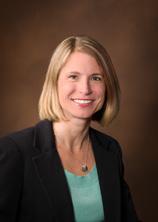

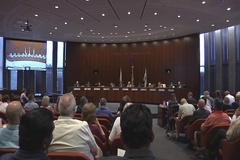
More problem solving and supporting the citizens and day-to-day operations of the city. He has no immediate retirement plans and tells us he wants to stay in the job until he no longer feels like he is making a difference.

Learn more about our city and all of its departments by visiting its website: www.naperville.il.us/.
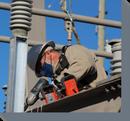



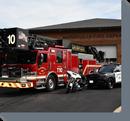








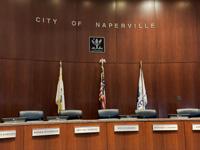

Any resident of Naperville can ask for and get a tour of City Hall by reaching out through the website or calling (630) 420-6111.
Additionally, anyone may sign up for “Naper Notify.” Naper Notify lets you sign up to receive emergency and community messages through a voice message, text message, or email.
